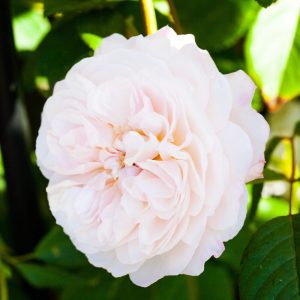Description
Rosa ‘Gemma’ is a striking and captivating addition to any garden with its bold and vibrant purplish pink flowers. The large buds open to reveal up to 40 petals per bloom, giving the flowers a rounded and attractive form that will draw the eye. Against the backdrop of its dark, glossy foliage, the flowers of this rose make a truly stunning display. In addition to its beauty, ‘Gemma’ is also a healthy and reliable plant, with good disease resistance levels that make it a great choice for gardeners looking for low-maintenance roses. Whether grown in a mixed border, rose border, or in pots and containers, ‘Gemma’ is sure to add a touch of drama and beauty to any outdoor space.
Key Facts
- Common Name(s):Gemma Rose
- Hardiness:Fully hardy
- How big will I get? Rosa ‘Gemma’ can grow to a height of 1m and a spread of 0.7m.
- Did You Know That:The rose is associated with many different meanings, including love, friendship, and gratitude.
Plant Calendar
A rough guide to how this plant will change through the year.
| Jan | Feb | Mar | Apr | May | June | July | Aug | Sept | Oct | Nov | Dec | |
| Flowering Time |   |
  |
  |
  |
||||||||
| Foliage Colour |  |
 |
 |
 |
 |
 |
 |
 |
 |
| J | F | M | A | M | J | J | A | S | O | N | D |
  |
  |
  |
  |
||||||||
 |
 |
 |
 |
 |
 |
 |
 |
 |
Care Guide

Soil Requirements
Rosa ‘Gemma’ is a versatile plant and can cope with wet or drier soils, but prefers there to be decent drainage. This plant can grow in soil with a wide range of pH levels, it is not picky about the pH level of the soil.

Best Position
Rosa ‘Gemma’ prefers a sheltered position and requires full sun to thrive, this consists of more than six hours of direct sunshine per day.

Maintenance
Rosa ‘Gemma’ should be pruned in late winter or early spring, before new growth begins. Begin by removing any dead, damaged, or diseased wood from the plant, making sure to sterilize your pruning shears between cuts to prevent the spread of disease. Next, cut back any old wood to encourage the growth of new shoots, cutting back to a healthy bud or lateral branch. Remove any weak or spindly growth that won’t produce good blooms, focusing on leaving strong, healthy shoots that will produce plenty of flowers. Finally, shape the plant by cutting back any overly long or unruly shoots, creating a more compact, attractive plant. By following these steps, you can keep your shrub roses healthy and blooming beautifully year after year.

Pest, Diseases and Wildlife
Rosa ‘Gemma’ can have problems with aphids, scale insects and caterpillars, it can be vulnerable to certain diseases such as black spot, rust and powdery mildews. It is also known to attract bees.





